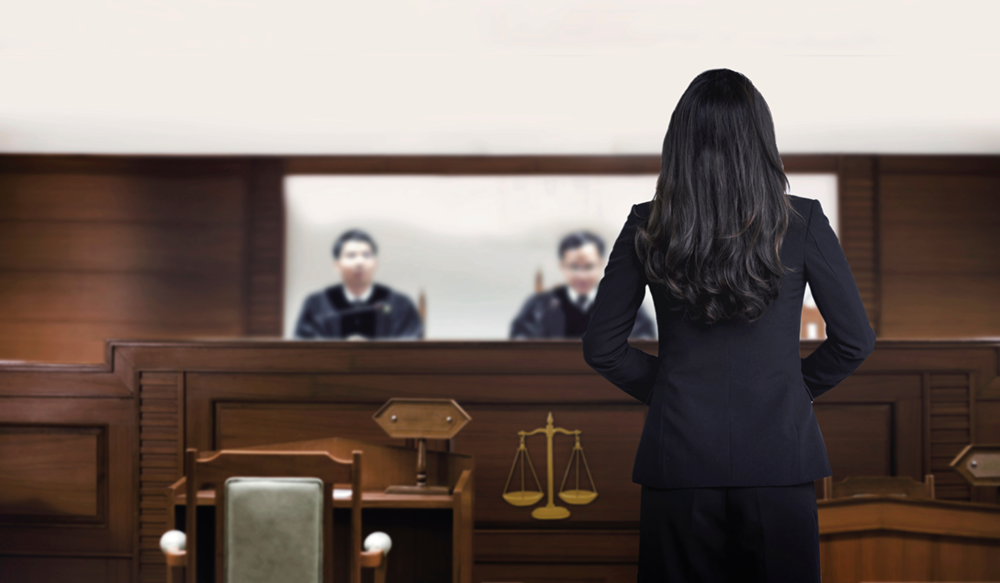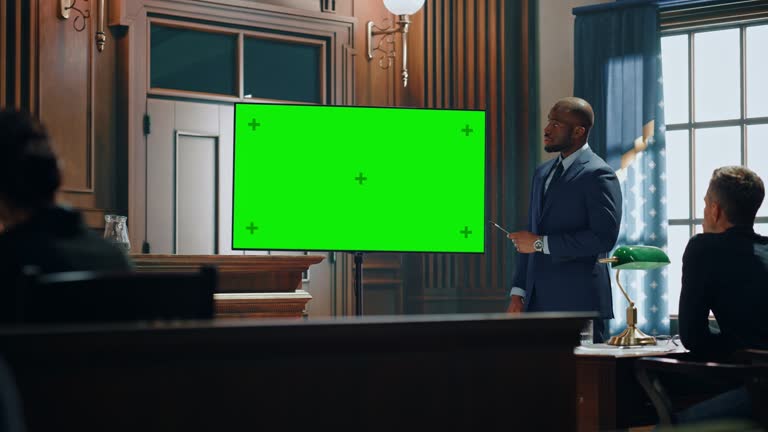Mastering the Art of Trial Presentations: Trick Techniques for Efficient Legal Arguments
Mastering the Art of Trial Presentations: Trick Techniques for Efficient Legal Arguments
Blog Article
Navigating the Complexities of Test Presentations: Tips for Seamless Shipment and Compelling Arguments
In the world of lawful procedures, the art of trial presentation stands as an important determinant of success. The intricacies intrinsic in trial discussions require a delicate balance of finesse, skill, and technique.

Understanding Test Purposes
To effectively navigate a test, it is crucial to have a clear understanding of the goals that need to be accomplished. Before entering the court, legal teams must define their objectives and wanted outcomes. These objectives offer as directing concepts throughout the test, shaping approaches and influencing decision-making procedures.
Understanding test purposes includes a detailed analysis of the case, lawful criteria, and the customer's finest interests. Trial Presentations. It calls for a thorough assessment of the truths, identifying vital concerns, and expecting potential obstacles. By establishing particular and measurable goals, lawyers can tailor their discussions and debates to align with the desired outcomes
Additionally, a clear understanding of trial purposes allows legal groups to focus on evidence, witnesses, and lawful debates successfully. It permits the development of a meaningful story that reverberates with the discretionary, enhancing the general instance presentation.

Organizing Proof Efficiently
Having a clear understanding of test objectives lays the structure for organizing evidence efficiently in lawful procedures - Trial Presentations. By lining up the discussion of proof with the wanted outcomes of the test, lawful teams can strengthen their debates and boost their persuasiveness. One important element of organizing evidence is classification. Grouping proof based on styles or importance to specific legal elements can help simplify the discussion and make complex information extra absorbable for the judge or court.
An additional crucial element in arranging evidence successfully is establishing a sensible flow. Providing proof in a systematic and consecutive fashion can assist develop an engaging story that supports the lawful debates being made. Furthermore, utilizing aesthetic aids such as timelines, charts, or graphs can further boost the company of evidence and assist in making clear intricate relationships or series of occasions.
Furthermore, guaranteeing that all proof offered is appropriate and admissible to the situation is necessary. Inadmissible or unnecessary evidence can diminish the stamina of the debate and possibly hurt the trustworthiness of the here and now event. Consequently, a thorough evaluation and option process should be taken on to consist of only one of the most legitimately sound and impactful evidence in the trial presentation.
Crafting Persuasive Stories
Crafting compelling narratives plays a crucial duty in presenting persuasive disagreements throughout lawful proceedings. A well-crafted story has the power to captivate the audience, evoke feelings, and inevitably guide the choice for today party. When constructing a story for a test presentation, it is necessary to develop a clear story that highlights crucial factors and links them in a meaningful way. Begin by outlining the facts of the situation in a compelling fashion, making sure that the series of occasions is easy to comply with. Present personalities effectively, giving history information that aids the audience recognize their inspirations and activities. In addition, including vibrant summaries and engaging language can bring the narrative to life, making it a lot more unforgettable for the court and jury. By weaving with each other evidence, testimony, and legal arguments right into a cohesive and convincing story, lawful professionals can effectively promote for their clients and enhance the probability of a favorable outcome in the court room.
Grasping Aesthetic Help
Effective use visual help is essential to boosting the impact and quality of test presentations. Visual aids, when made use of strategically, have the power to streamline complex info, strengthen bottom lines, and leave an enduring impression on the judge and court. To grasp visual aids in trial presentations, it is crucial to make sure that they are clear, concise, and relevant to the disagreements being made.
When incorporating visual help, such as charts, timelines, pictures, or charts, right into a trial discussion, it is essential to maintain them aesthetically appealing yet specialist. The visuals should enhance the spoken disagreements, offering an aesthetic representation of the info being reviewed without overwhelming the audience with unneeded details.
In addition, exercising with the aesthetic aids ahead of time is critical to make sure a seamless distribution throughout the test. Acquainting oneself use this link with the content, changes, and timings of each aesthetic aid can assist keep the circulation of the discussion and avoid technical glitches that might occur.
Providing Impactful Closing Disagreements
A compelling closing argument offers as the end result of a test discussion, enveloping the core narrative and convincing the judge and jury towards a beneficial choice. Begin by laying out the major arguments that support your client's setting, stressing why the evidence offered throughout the test sustains your story.
Additionally, incorporating emotional appeal can better reinforce your closing disagreement. By connecting and humanizing the case on a personal level with the decision-makers, you can evoke compassion and understanding, influencing their assumption of the facts offered. Additionally, restating the lawful criteria that need to be fulfilled for a beneficial ruling can enhance the credibility of your placement. Ultimately, a well-crafted closing argument ought to leave an enduring impact, compelling the discretionary to regulation in your client's support.
Conclusion
To conclude, understanding trial discussions includes comprehending goals, arranging proof, crafting narratives, utilizing aesthetic aids, and supplying impactful closing read this article arguments. By implementing these techniques successfully, lawyers can present their instance flawlessly and make compelling disagreements in the court. It is crucial to navigate the intricacies of trial presentations with accuracy and skill to achieve success in lawful process.
By straightening the discussion of evidence with the preferred results of the trial, legal teams can enhance their disagreements and enhance their persuasiveness (Trial Presentations). To master aesthetic help in trial presentations, it is vital to guarantee that they are clear, succinct, and relevant to the arguments being made
A compelling closing argument serves as the conclusion of a test discussion, enveloping the core narrative and convincing the court and jury in the direction of a desirable choice. Begin by detailing the major debates that support your client's setting, stressing why the evidence provided throughout the trial supports your story.In verdict, understanding test discussions entails news comprehending goals, arranging proof, crafting stories, utilizing visual aids, and providing impactful closing disagreements.
Report this page